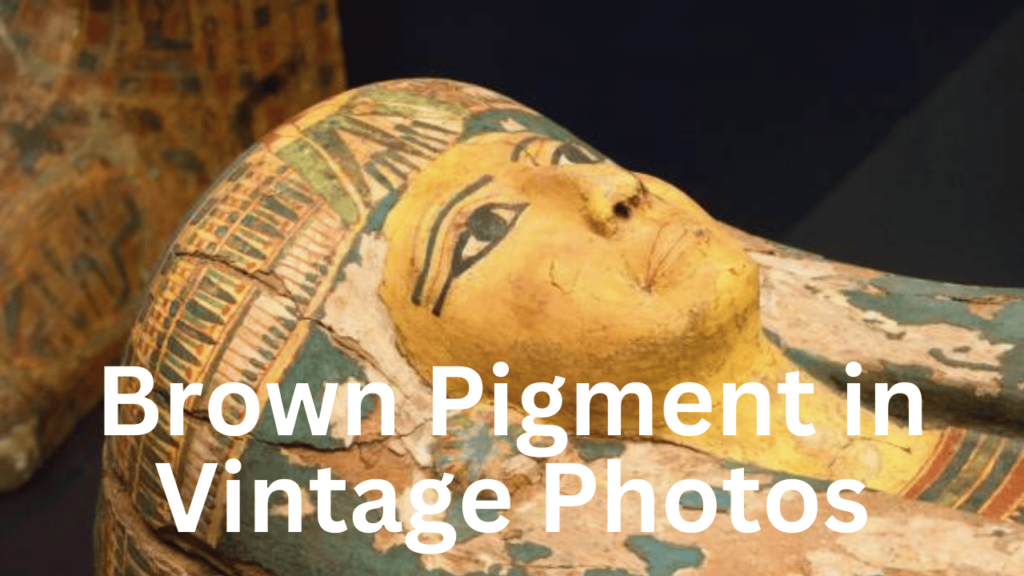The brown pigment in vintage photos, known as sepia toning, has a rich history and significant cultural and aesthetic value. This article explores the reasons behind the use of brown pigment in vintage photos, the process of sepia toning, and its enduring appeal in modern photography. We will delve into the science and art behind sepia-toned images, their preservation, and the modern revival of this timeless technique.
The Art and Science of Sepia Toning
What is Sepia Toning?
Sepia toning is a photographic technique that gives images a warm brown tint. This process involves treating a silver-based photographic print with a sepia solution, converting the metallic silver to silver sulfide. The result is a brown pigment in vintage photos that not only enhances their aesthetic appeal but also increases their longevity. Sepia toning was initially adopted to improve the stability of photographs, making them less prone to fading over time.
The Process of Sepia Toning
Achieving the brown pigment in vintage photos required meticulous techniques during the development process. Photographers used various chemicals, such as silver nitrate and sepia toners, to create the desired effect. The final color depended on factors like exposure time, the type of paper used, and the concentration of the toning solution. This careful manipulation of chemical processes transformed simple black-and-white images into sepia-toned masterpieces.
Practical Tips for Creating Sepia-Toned Photos
DIY Sepia Toning
For photography enthusiasts, creating sepia-toned photos can be a rewarding DIY project. Start by converting your digital photos to black and white. Then, use photo editing software to apply a sepia filter or manually adjust the color balance to achieve the desired brown tones. This simple process can transform modern photos into vintage-looking images with a classic appeal.
Preservation Techniques
To preserve sepia-toned photographs, whether vintage or newly created, it is essential to store them properly. Use archival-quality materials such as acid-free paper and protective sleeves. Keep the photos in a cool, dark, and dry environment to prevent fading and discoloration. When displaying sepia-toned images, consider using UV-protective glass to shield them from harmful light exposure.
Modern Revival and Techniques
Digital Sepia Toning
In the digital age, the brown pigment in vintage photos has been revitalized through photo-editing software. Programs like Adobe Photoshop and Lightroom offer filters that mimic the sepia effect, allowing photographers to create vintage-looking images with ease. This modern revival ensures that the classic sepia aesthetic remains accessible and popular.
Preservation and Restoration
Preserving vintage photos, especially those with brown pigments, requires careful handling. Exposure to light, humidity, and pollutants can cause these images to fade or discolor. Modern preservation techniques include climate-controlled storage, digital scanning, and the use of archival-quality materials. Restoration efforts focus on enhancing image clarity while maintaining the original character of the photograph.
The Enduring Appeal of Sepia-Toned Photos
Aesthetic Qualities
The brown pigment in vintage photos adds depth and warmth, making images more visually appealing. Sepia tones can transform simple portraits and landscapes into cherished memories, evoking feelings of nostalgia and romance. This aesthetic quality has ensured the lasting popularity of sepia-toned photography.
Contemporary Uses
Today, sepia tones are used by photographers and artists to create a vintage or timeless look in their work. This enduring appeal underscores the versatility of sepia toning, which continues to inspire and captivate. Whether used in wedding photography to add a romantic touch or in urban photography to highlight architectural details, sepia tones remain a powerful tool for visual storytelling.
The Science Behind Brown Pigment in Vintage Photos
Chemical Processes Involved
The process of sepia toning involves a chemical transformation where metallic silver in a photograph is converted to silver sulfide using a sepia solution. This conversion is crucial as silver sulfide is more resistant to environmental factors like light and air, which helps in preserving the photograph’s integrity over time. The brown pigment in vintage photos thus owes its existence to this delicate chemical balance that not only changes the color but also strengthens the image’s durability.
Factors Affecting Sepia Toning
Several factors influence the final outcome of sepia-toned photographs. The concentration of the sepia solution, the type of photographic paper used, and the duration of the toning process all play critical roles. Variations in these factors can result in different shades of brown, from light amber to deep chocolate hues. This variability adds a layer of artistry to sepia toning, making each photograph unique.
Conclusion
The brown pigment in vintage photos, achieved through sepia toning, represents a fascinating blend of art, science, and history. From its origins as a method to enhance photo longevity to its cultural significance and modern revival, sepia toning has left an indelible mark on the world of photography. Its warm, nostalgic tones continue to captivate and inspire, ensuring that sepia remains a beloved technique in both traditional and digital photography.
FAQs
What is the brown pigment in vintage photos?
The brown pigment in vintage photos is achieved through sepia toning, a process that converts metallic silver in photographs to silver sulfide, resulting in warm brown hues.
Why were sepia tones used in vintage photography?
Sepia tones were used to enhance the longevity of photographs, as the sepia compounds were more stable than metallic silver, reducing the risk of fading over time.
How is sepia toning applied to modern photography?
In modern photography, sepia tones are often recreated using digital tools like Adobe Photoshop and Lightroom, allowing photographers to apply vintage effects to their images.
What are the challenges in preserving sepia-toned photos?
Preserving sepia-toned photos involves protecting them from light, humidity, and pollutants. Modern techniques include climate-controlled storage, digital restoration, and the use of archival-quality materials.
Why do sepia-toned photos evoke a sense of nostalgia?
Sepia-toned photos evoke nostalgia due to their warm, brown hues, which add depth and a sense of timelessness, making the images feel like cherished artifacts from the past.

